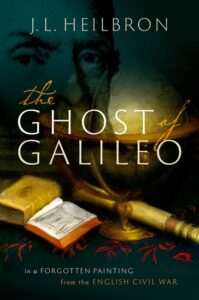 Toward the end of 1643, or perhaps at the beginning of 1644, a then somewhat famous but now little remembered painter committed to canvas the image of a young man and his tutor – neither of wide notoriety to history outside of their own respective families. The painting itself, a respectable rendering to be sure, subsequently hung largely neglected for centuries.
Toward the end of 1643, or perhaps at the beginning of 1644, a then somewhat famous but now little remembered painter committed to canvas the image of a young man and his tutor – neither of wide notoriety to history outside of their own respective families. The painting itself, a respectable rendering to be sure, subsequently hung largely neglected for centuries.
Then one day, an octogenarian historian of science, world-renowned for his lifetime of work in the history of physics and astronomy, while looking at the painting noticed that on a table depicted in it was a globe, a telescope, and two books – one opened and one closed. The opened book lay in such a position that the title page was shown. While no title was itself visible, the design would have been familiar to many contemporary to the time of the painting. It was the Galileo’s Dialogue on the Two Chief World Systems, the book in which he defended Copernican cosmology and as a result found himself in serious trouble indeed with the Roman Catholic Church.
Such is the background of Prof. J.L. Heilbron‘s new book The Ghost of Galileo In a forgotten painting from the English Civil War. Beginning with the painting itself and following a number of threads in weaving together – in a way that truly shows the humanities at their best – the history of science, art history, the history of religion, and political history of the early modern period, Prof. Heilbron explores the social, religious, artistic, and scientific landscapes of that time.
And, for those who might be interested to hear what the author himself has to say about the book and the writing of it, the New Books Network’s History podcast recently released a very interesting long-form interview with Prof. Heilbron by Prof. Crawford Gribben.
Available from:

